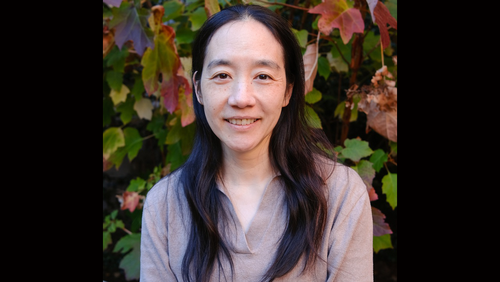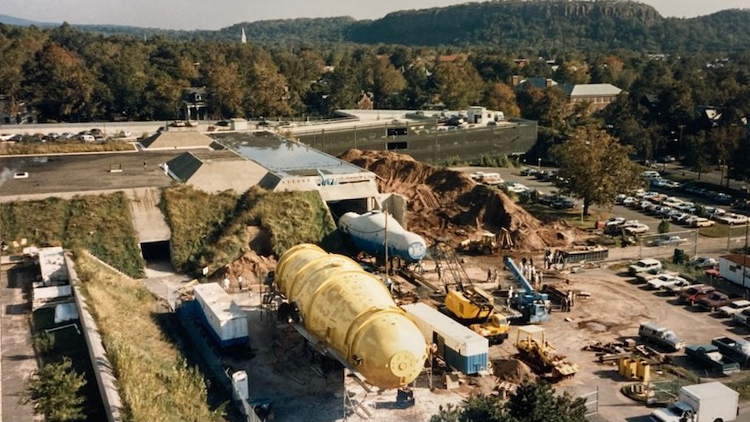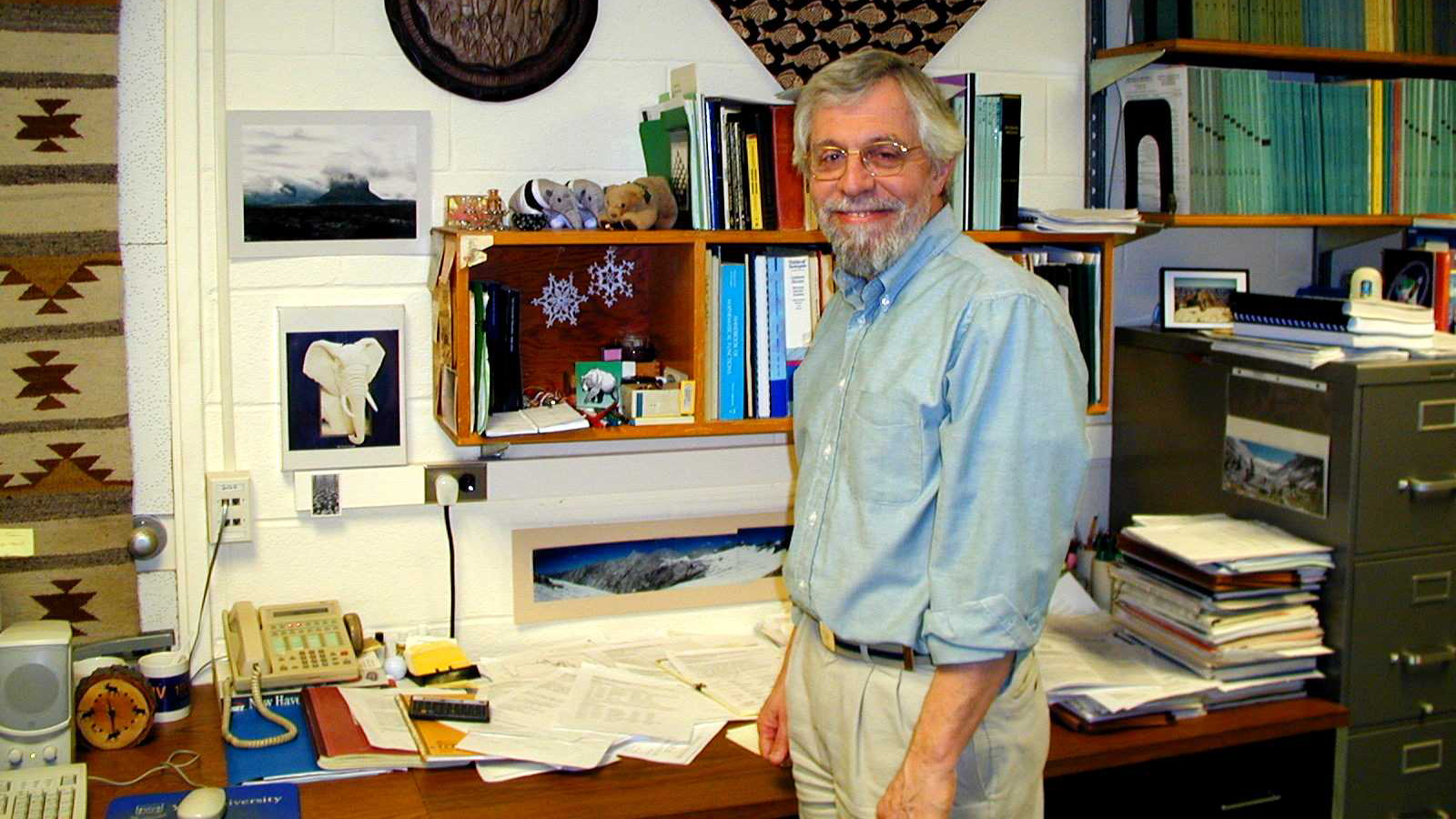
Eun-Joo Ahn, lecturer in physics, and a member of Yale’s Wright Lab, has been named a 2023-24 Yale Presidential Visiting Fellow.
Ahn is a self-described “astrophysicist turned historian of science”. She received her Ph.D. in astronomy and astrophysics from the University of Chicago in 2006 with the thesis “Early stages of ultra high energy cosmic ray air showers as a diagnostic of exotic primaries” and a second Ph.D. in History from the University of California Santa Barbara in 2023 with the thesis “Factory Observatory at Mount Wilson: Astronomy, Regional Development, and Place, 1900-1930.”
Ahn came to Yale in 2023 as a postdoctoral associate in the Yale Center for the Study of Race, Indigeneity, and Transnational Migration with a joint appointment in physics, and has since been appointed lecturer in physics. She taught the Yale College course “Asian Americans and STEM” in Fall 2023 and Fall 2024 and will teach “History of Physics at Yale” in Spring 2025.
In addition to teaching courses, Ahn has been engaged in uncovering the history of Yale’s Wright Lab and physics at Yale, with several projects underway.
WNSL archiving projects:

From 1985-1987, the Wright Nuclear Structure Laboratory (WNSL, now known as Wright Lab) upgraded its MP-1 tandem van de Graff accelerator to become the Extended Stretched TransUranium (ESTU) accelerator. The conversion made the ESTU the most powerful stand-alone tandem accelerator in the world until the end of its operation in 2011. The research at today’s new facilities for the study of exotic unstable nuclei is an outgrowth of earlier studies with these advanced tandem accelerators, and relativistic heavy ion accelerators have a parentage in machines like Yale’s tandem. (For more information on WNSL’s legacy, see here).
Peter Parker, professor Emeritus of physics, who was the associate director of WSNL during the upgrade, and later its director, documented the upgrade process by taking and labelling almost 3,000 photographs. Ahn is now cataloging and describing these photographs, which eventually will be reposited at the University Archives, with the assistance of Parker, as well as Jeff Ashenfelter (Wright Lab associate director of operations) and Frank Lopez (Wright Lab research and development technician), who also worked at WSNL during the upgrade as head of accelerator operations and accelerator operator/research and development technician, respectively.
Ahn plans to use these photographs to prepare a photo essay of the 1985-87 accelerator upgrade and to write a scholarly article.
Ahn explained that this project intrigued her because it is demonstrating “science in action,” and that the organized photograph collection enables the story to unfold, enhanced by the commentary provided by the people who were there to see it happen.
Ahn further explained that this project allows for a “better understanding of how the science of high energy physics and nuclear physics evolved in the United States in the twentieth century”. She said, “the existing history of science narrative, especially in these fields, mostly follows the research of national laboratories after the second World War, with the universities and other smaller laboratories providing the manpower,” but she has learned that the history of WSNL is “challenging this narrative”.
She said, “I didn’t know before how prominent WSNL was [in this time period]. D. Allan Bromley, the director of WSNL, developed the original accelerator and its upgrade, and was able to implement it here.” (For more information on the impact, see here.)
In tandem with the photograph project, Ahn is also preparing documents that span the entire history of WSNL for the archive, including lecture notes, course syllabi, computer logbooks, and correspondences.
Oral history project:

Ahn received a grant from the American Institute of Physics (AIP) to interview Parker during Spring 2024, with a transcript available on the AIP website.
AIP Oral History Interviews offer unique insights into the lives, works, and personalities of modern scientists. Interviews range in date from the early 1960s to the present and cover the major areas and discoveries of physics from the past 100 years. Thirty-eight former and current affiliates of Yale have been interviewed thus far, including Wright Lab members Richard Casten, Sarah Demers, Reina Maruyama, and Parker.
Yale Physics administrative hallway project:
Ahn is also working to develop an exhibit that is a timeline of the history of physics at Yale, to be installed in the hallway by the administrative offices of the Sloane Physics Laboratory.
Ahn plans to create an exhibit that is dynamic, inclusive, and not definitive that will contribute to existing studies in the history of physics and find new leads.
Ahn said, “The Yale Physics department is one of the few places in the United States where we can trace how the natural philosophy curriculum of academic institutions in the 1700s changed into today’s physics.”
Ahn noted that the timeline would not be one long panel, but rather several panels hung separately, to allow for exhibit to change over time.
Ahn said that the plan is to not show the history of the department and the development of physics from natural philosophy as “progressive,” as some timelines do, but rather, the exhibit will “provide an opportunity to consider what factors are in play” on each stage of the journey. “What motivated the study of natural philosophy back in the 1700s, and what motivates the study of physics now?”
Ahn’s interest in undertaking these projects is “to better understand why we are doing science and physics this way today by learning more about what happened in the past.” Through uncovering the history of physics at Yale, building on the work of scholars who have chronicled the history of physics (in particular Suha Gursey) and astronomy (Dorrit Hoffleit and William F. van Altena) at Yale and the Yale and Slavery Research Project (David W. Blight, et al), she has also developed her appreciation for the University. Ahn said, “Yale is not just a fancy name to me now. It became more personal, and I got to understand Yale better.”
This article is by Victoria Misenti, Wright Lab program manager.